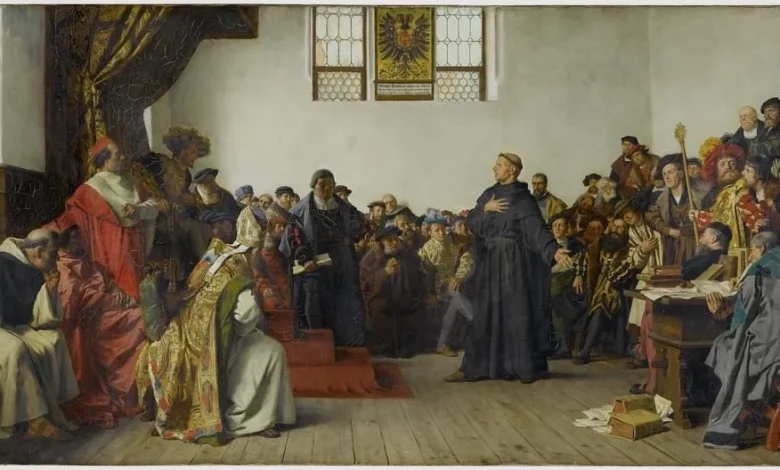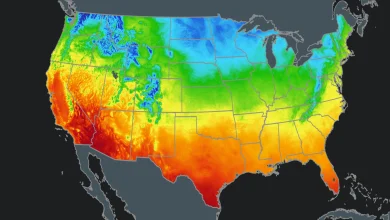The Catholic Beliefs of Protestant Reformers

Today, October 31, marks “Reformation Day,” which commemorates the unfortunate split between Protestants and Catholics in 1517. When we look back at the upheaval of the 16th century, we tend to picture the Protestant Reformers as men who rejected Catholicism in its entirety. Yet a closer look reveals something more nuanced—and even ironic.
Martin Luther, John Calvin, Huldrych Zwingli, and Thomas Cranmer all held to beliefs that were profoundly Catholic, many of which are denied by modern Protestants. Their own writings show that the first reformers were not so far removed from Rome as their spiritual heirs often assume.
Luther and the Real Presence
Take the doctrine of the Eucharist. Today, many evangelical Christians interpret Christ’s words “This is my body” (Luke 22:19) as merely symbolic. But the very founder of Protestantism, Martin Luther, never viewed it this way. Preaching on John 6, Luther declared: “There we have the flat statement which cannot be interpreted in any other way than that there is no life, but death alone, apart from His flesh and blood if these are neglected or despised” (That These Words of Christ, “This Is My Body,” Still Stand Firm Against the Fanatics, 1527).
Orthodox. Faithful. Free.
Sign up to get Crisis articles delivered to your inbox daily
For Luther, while he rejected the Catholic doctrine of transubstantiation, he believed that Christ’s Presence in the Eucharist more than a symbol. The Lord’s Body and Blood were truly given and received. Thomas Cranmer, the architect of Anglican liturgy, also affirmed that Christ’s sacramental presence was “real and effectual” for the believer. Compare this with the view of many modern Protestants—who see Communion as little more than a memorial meal—and the irony becomes clear: the reformers were more sacramental than their heirs.
Indeed, every Christian for the first 1,500 years after Christ believed Jesus was truly present in the Holy Eucharist.
Marian Devotion
Another striking continuity concerns devotion to the Blessed Virgin Mary. For many Protestants today, Marian devotion is dismissed as “too Catholic.” But the reformers themselves honored her in ways that might surprise modern evangelicals.
Luther praised her as “the highest woman and the noblest gem in Christianity after Christ.” John Calvin admitted that she was granted “the highest honor” by God in being chosen to bear the Son. Zwingli went further, insisting that esteem for Mary should grow alongside love for Christ.
It is worth noting that none of the reformers questioned her perpetual virginity. Zwingli wrote with force: “I firmly believe that Mary…in childbirth and after childbirth forever remained a pure, intact Virgin” (An Exposition of the Faith, 1524).
Even Luther, in 1544, called it “an article of faith” that she remained a virgin after Christ’s birth. By contrast, many modern Protestants recoil at even the suggestion of her perpetual virginity, showing just how far they have drifted from their founders.
Confession and Absolution
Confession is another example. Luther, who as a monk sometimes confessed multiple times daily, never abandoned the practice. In his Smalcald Articles he insisted: “I will allow no man to take private confession away from me, and I would not give it up for all the treasures in the world” (Smalcald Articles, 1529).
For him, the comfort of hearing personal absolution in the name of Christ was essential. Compare this with today, when most Protestant traditions have abandoned sacramental confession altogether, replacing it with vague notions of “going directly to God.” Here again, the reformers sound more Catholic than their successors.
The Sacraments and Apostolic Tradition
It is also telling that the magisterial reformers—Luther, Calvin, and Zwingli—did not discard sacramental theology. Luther retained Baptism and the Eucharist as true sacraments instituted by Christ. Calvin recognized Baptism, the Eucharist, and even a form of Penance. None of them suggested that sacraments were empty symbols, as many evangelical churches do today.
Even more striking is their respect for tradition. Luther, while rejecting abuses, appealed to the Fathers of the Church. Calvin filled his Institutes with references to Augustine. Zwingli acknowledged the continuity of the Virgin Birth and apostolic teaching.
Why the Split?
The Papal Encyclical Exsurge Domine was the official response from Pope Leo X to Martin Luther’s 95 Theses in 1520. The response dutifully addresses 41 topics of concern raised by Luther. The remaining 54 topics were of no concern to the Holy See, as there was no scandal involved. Thus, no explanation was required. The topics in question were addressed, and they have since been corrected by the Church.
The immediate flashpoint was not devotion to Mary, belief in the Eucharist, or confession. It was abuses surrounding indulgences, the papacy, and questions of authority. These abuses were acknowledged and rectified by the Church. The division should never have happened. It’s time for our Protestant brothers and sisters to return and come home.
In the Papal Encyclical Exsurge Domine, the official response from Pope Leo X to Martin Luther’s 95 Theses in 1520…the immediate flashpoints were not devotion to Mary, belief in the Eucharist, or confession.Tweet This
This raises the question: Why the division?
Lessons for Today
In the 500 years since, Protestantism has fractured into tens of thousands of denominations, often contradicting each other on basic doctrines. Meanwhile, the Catholic Church continues to proclaim one faith and one sacramental life. St. Paul’s warning to the Corinthians rings true: “that all of you agree, and that there be no divisions among you” (1 Corinthians 1:10). Christ Himself prayed “that they may all be one” (John 17:21).
The irony cannot be missed. The reformers stood closer to Catholicism than many of today’s Protestants, and yet the divisions have multiplied beyond anything they could have imagined. The Catholic Church, for all her human faults, remains the one body that holds together the Real Presence, Marian devotion, sacramental confession, and apostolic tradition—the very things that even Luther, Calvin, Zwingli, and Cranmer affirmed.
The takeaway is not to romanticize the reformers but to recognize that Catholic truth is more enduring than the passing disputes of history. If the early reformers could hold to these Catholic convictions, perhaps modern Protestants can rediscover them as well. The invitation remains: come home to the fullness of the faith, the Catholic Church, where Christ’s Body continues to nourish, heal, and unite.





